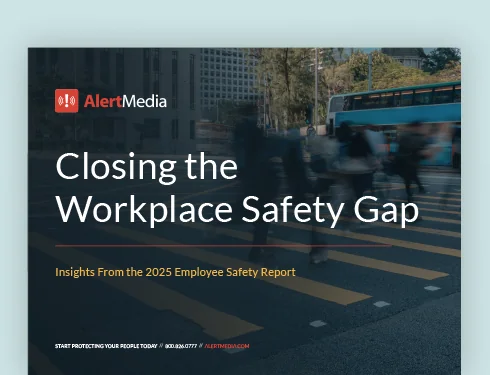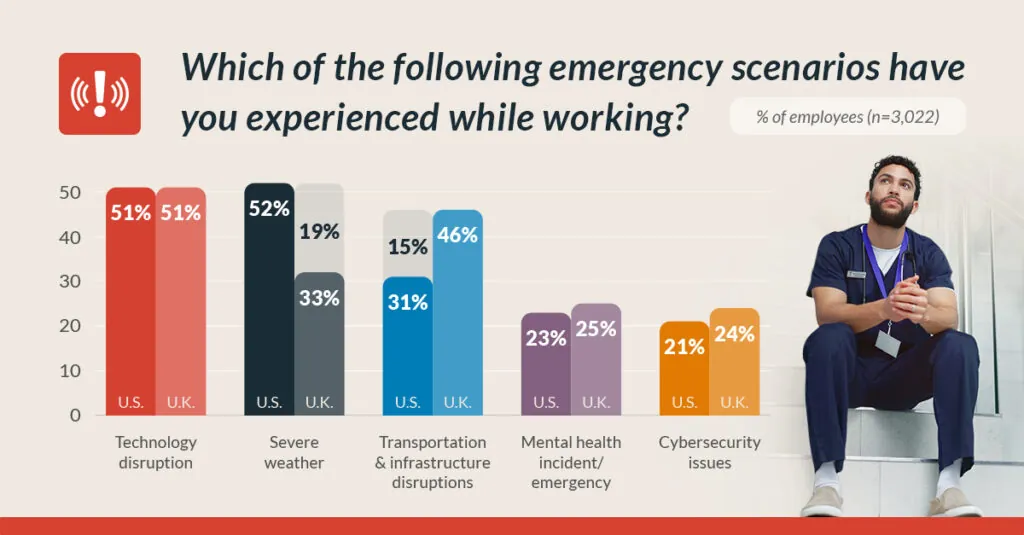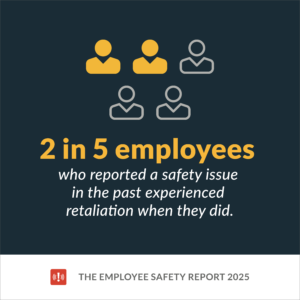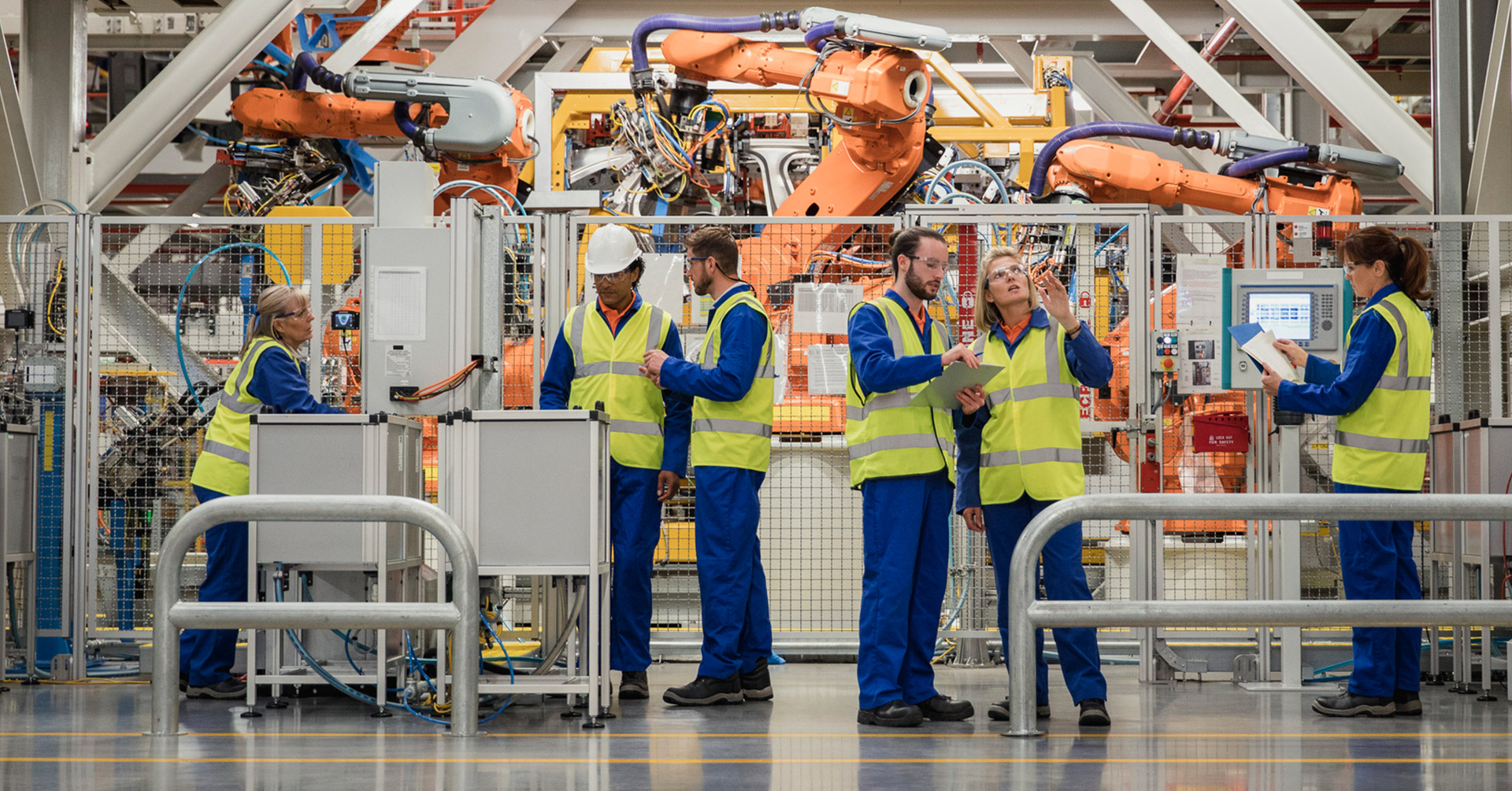
36 Workplace Safety Facts & Statistics to Guide Preparedness
To protect your workers, you need to know what you’re up against. Check out the latest workplace safety statistics and insights that can help you build a successful safety program.

Keeping employees safe is one of an organization’s most important responsibilities. Not only is it a moral obligation, but there is also a legal precedent—your duty of care—for protecting workers. Safety facts, statistics, and standards can inform response plans and training, helping organizations build safety programs, prevent work-related injuries, and save lives.
More resources than ever are available to businesses to ensure they can keep their workers safe. Resources address everything from fall protection equipment and seat belts to protect workers on the job to safety training frameworks like tabletop exercises to train employees to prevent workplace accidents and fatal occupational injuries. Before you approach your safety program, it helps to understand the national landscape of dangers and safety incidents by looking at workplace safety statistics and safety facts.
Organizations such as the U.S. Bureau of Labor Statistics (BLS), the Occupational Safety and Health Administration (OSHA), Centers for Disease Control and Prevention (CDC), Department of Labor, National Highway Traffic Safety Administration (NHTSA), and the National Safety Council’s Injury Facts site gather comprehensive and reliable data on nationwide workplace injury rates, injury statistics, and safety trends. Many of the following facts are from their archives. AlertMedia’s Employee Safety Report provides unique insights into workers’ views.
Our research has shown that employees care more than ever about their safety on the job and expect their employers to provide a high degree of confidence that their workplace is safe. And with the right information about what is happening in the world of workplace safety, you’ll be better prepared to do just that. Read on to understand the trends that can inform your safety planning.
Workplace Safety Statistics in Perspective
General statistics
The following figures—gathered by trusted government agencies such as the BLS and OSHA—reflect the entire American workforce across industries and demographics. We’ve also included safety facts about Great Britain’s injury and fatality rates. We’ll examine how these workplace statistics have changed and look for meaningful trends.
#1: The U.S. had 2.6 million nonfatal workplace safety incidents in 2023.
These incidents include slips, trips, falls, illnesses, and other nonfatal injuries. This was a decrease of 8.4% from 2022.
#2: There were 5,283 recorded fatal workplace safety incidents in 2023.
This figure is a 3.7% decrease from 5,486 reported worker fatalities in 2022. Put another way, there were 3.5 fatalities per 100,000 U.S. full-time equivalent (FTE) workers in 2023.
#3: Worker deaths in America have decreased dramatically over the decades from about 38 worker deaths per day in 1970 to 15 per day in 2023.
However, there is still much work to be done to avoid preventable workplace deaths.
#4: Worker illnesses have decreased significantly, with a 56.6% drop in illnesses to 200,100 cases in 2023.
This is the lowest number since 2019, resulting from a 72.6% decrease in respiratory illness to 100,200 cases in 2023.
#5: Preventable deaths are also decreasing again, with a 3% drop from 2022–2023.
After a dip in 2020 due to a decrease in hours worked during the COVID-19 pandemic, preventable deaths in 2021 were the third highest since 2008. They have since decreased to three preventable deaths per 100,000 workers.
#6: Great Britain, on the other hand, has a significantly lower rate of workplace fatalities, with 138 workers killed in work-related accidents in 2023/24.
These accidents primarily were within the construction and agriculture, forestry, and fishing sectors.
What workers think
The landscape of workplace safety has changed dramatically over the past few years. Here are some recent insights AlertMedia collected for our 2025 Employee Safety Report.
#7: Over a third of employees (35%) don’t feel prepared to manage emergencies at work.
#8: Only 3 in 5 (63%) employees believe their employer considers their physical safety at work extremely important; more employees believe their employer prioritizes company reputation (75%), bottom line (68%), and employee productivity (68%) over safety.
#9: 59% of employees don’t believe their employer has increased safety efforts over the past year; they perceive stagnant efforts, at best. This perception is higher among U.K. employees (62%).
#10: Employees who feel completely safe at work are 3X more likely to feel prepared to handle an emergency if they encounter one tomorrow (28% vs. 9%).
#11: 81% of employees have encountered an emergency at work.
These emergencies range from severe weather to workplace violence and crime. U.K. employees are slightly more likely to have encountered an emergency at work than U.S. employees (83% in the U.K. and 80% in the U.S.).

#12: Mental health is the second most important priority at work, with 67% of employees saying it is extremely important to them.
Additionally, 65% report that their psychological safety is extremely important to them.
Safety at home and on the go
#13: Business travel is back, with global business travel hitting a record spending level of $1.48 trillion in 2024.
And it’s only going to increase. Business travel is expected to exceed $2.0 trillion by 2028.
#14: Air travel is getting more expensive, with a 6% rise in airline ticket costs in Europe year-over-year in 2024.
#15: 35% of employees are required to travel for work in some capacity.
#16: Remote workers are protected under workplace safety regulations.
A great way to promote work-from-home safety is to teach your employees how to use basic risk management tenets, such as risk assessments, to understand the hazards that might put them at risk from home. These risks will be very different from those at a workplace facility, and many, such as ergonomic risks, are much more preventable.
#17: Transportation incidents like motor vehicle crashes remained the leading cause of death for workers in 2023.
Transportation fatalities accounted for 36.8% of all work-related fatalities in 2023. Be sure to train your employees on motor vehicle safety, including the risks of speeding and driving after consuming alcohol and how to use assistive safety features.
Workplace safety costs
#18: Workplace injuries can cost a company significantly, with a single incident of an injury claim averaging $40,000 in the U.S.
#19: In Great Britain, more than 476,000 workplace injuries resulted in up to seven days of absence from work.
An additional 127,000 resulted in even more time off beyond seven days, costing valuable working time and diminishing productivity for their respective organizations.
#20: The HSE reported 33.7 million working days lost due to work-related illness and workplace injury in Great Britain.
#21: Indirect costs of workplace accidents can include clean-up costs, training replacement workers, regulatory fines, legal costs, and PR costs from bad publicity.
Safety regulations
#22: OSHA employs around 1,850 inspectors.
These inspectors work for federal and state governments to ensure the health and safety of 130 million workers at more than 8 million worksites across the United States.
#23: In 2024, OSHA conducted 34,696 inspections on workplaces.
#24: The top 5 OSHA violations for 2023–24 were:
- Fall protection
- Hazard communication
- Ladders
- Respiratory protection
- Lockout-tagout
#25: In Great Britain, the Health and Safety Executive (HSE) manages workplace safety regulations, conducting inspections and documenting injuries, accidents, and illnesses.
The most and least at risk
The risks a worker faces are influenced by their industry, demographic, and other factors. Here are some statistics that indicate higher-risk segments and others that are generally safer.

#26: Construction workers are the most at risk for workplace fatalities among all industry sectors in 2023, with 1,075 deaths.
Construction has had the most fatalities going back to 2011. Falls, slips, and trips were the most frequent cause of these incidents at 39.2 percent.
#27: In 2023, the fatal injury count of Black or African American workers decreased 10.2% from 734 in 2022 to 659 in 2023.
The fatal injury rate for Hispanic or Latino workers also decreased from 2022 to 2023, down from 4.6 to 4.4 cases per 100,000 FTE workers. Transportation incidents were the highest cause of fatalities for both Black or African American and Hispanic or Latino workers.
#28: While women accounted for only 8.5% of workplace fatalities, they were a much higher proportion of homicide fatalities at 18.3%.
Safety reporting
Safety reporting insights come from the Employee Safety Report.
#29: 84% of employees feel their employer encourages them to report safety concerns.
 Additionally, 41% of U.K. and 35% of U.S. employees have reported a safety issue or concern at work.
Additionally, 41% of U.K. and 35% of U.S. employees have reported a safety issue or concern at work.
#30: A third of employees (32%) admit they aren’t comfortable reporting safety issues.
This puts organizations at risk for underreporting hazards, leading to increased rates of injuries and accidents and, ultimately, higher employer costs to mitigate these risks.
#31: Many employees face consequences for reporting hazards, with 39% of employees who reported a safety issue in the past experiencing retaliation when they did.
This retaliation can perpetuate underreporting and increase instances of workers’ compensation and preventable injuries, as employees are less likely to lean on their organization’s resources and reporting processes.
#32: 1 in 3 employees (36%) think management doesn’t take employee feedback on safety issues seriously.
#33: Barriers to safety reporting can cause employee engagement and trust to fall.
Of those employees who are uncomfortable reporting safety concerns, 45% are not completely engaged at work, and 47% do not completely trust their employer.
Fun Safety Facts
Workplace safety can be a tough topic that often includes disturbing or troubling information. But a lot of good is happening in the field that improves lives. Here are a few more fun safety facts.
#34: Nearly 45% of workers believe automation and technologies like robotics and AI positively impact workplace safety by reducing exposure to hazardous tasks.
#35: Safety training can reduce workers’ compensation claims by as much as 42%.
#36: Adopting workplace safety and injury prevention programs can save organizations between $9 billion and $23 billion annually.
Why Workplace Safety Facts Are Important
As your employees navigate their jobs from day to day, it’s easy to lose perspective on their relative safety. By remaining cognizant of the risks our employees face, as well as the risks our neighboring industries deal with, we can continue making all jobs, all work environments, and all workers safer.
This is the right thing to do morally, and it’s also good business. As our Employee Safety Report demonstrates, workers are becoming increasingly concerned with their health and safety on the job, and they’re expecting more from their employers in turn. Companies that navigate the dangers of their work and keep their employees out of harm’s way are far more likely to retain top talent and enjoy better brand recognition than their competitors. Awareness of common workplace hazards is only the first step toward meeting your organization’s duty of care. The critical steps you take next can make the difference for your employees’ ongoing health and safety.



![How to Create an Effective Workplace Safety Policy [+ Free Checklist]](https://www.alertmedia.com/wp-content/uploads/2022/02/Blog-HowTo-WorkplaceSafety-Policy.jpg)
